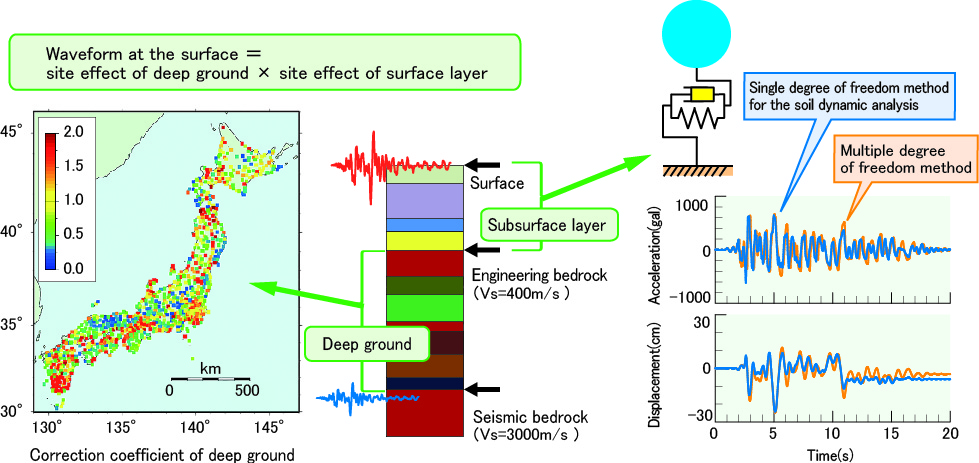2. Simple evaluation method of the waveform at the surface using micro-tremor
- A simple evaluation method of the waveform at the surface was proposed by using the micro-tremor data and database of site effect of the deep ground in Japan.
- It is possible to estimate ground motion along railway lines, simply by using micro-tremor data.
In order to evaluate surface waveforms across an area large enough to identify seismically vulnerable locations along a whole line, it is necessary to consider the influence of the ground layer lying just above the relatively hard stratum, as it is known in anti-seismic design, with the deep earth layer. To measure influence of the surface layer, the traditional method relied on boring surveys and in-lab tests followed by non-linear dynamic analysis using several degrees of freedom models; this required multiple ground surveys in each location and modelisation. The evaluation of deep earth tremors on the other hand called for large scale earthquake simulation; deploying this over a vast area covering the entire railway network was not realistic.
Consequently a method was proposed for evaluating the amplitude of surface waveforms by conducting single degree of freedom dynamic soil analysis using only the ground layer natural period, itself estimated from ordinary measurable microtremors(Fig.1). Confirmation was obtained that the proposed method and non-linear dynamic multiple degrees of freedom analysis produce similar results. Furthermore the proposed method is simpler and more accurate in evaluating surface waveforms.
In addition a ground site correction coefficient for deep-ground layers was proposed to take into account seismic amplification characteristics (propensity to shake) and these correction coefficients were collected into a national database.
Combination of the aforementioned method and coefficients mean that it is possible to carry out simple evaluation of surface earthquake with appropriate consideration of subsurface and deep-ground layer influence in the target area.

Fig.1 Simple evaluation method of the waveform at the surface